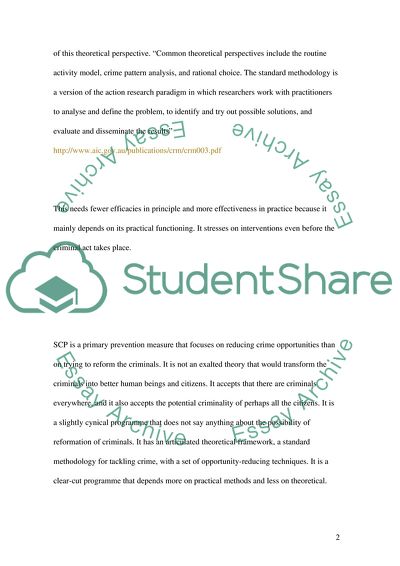Cite this document
(The Theory of Crime Prevention Essay Example | Topics and Well Written Essays - 2000 words, n.d.)
The Theory of Crime Prevention Essay Example | Topics and Well Written Essays - 2000 words. Retrieved from https://studentshare.org/law/1710522-the-only-effective-strategy-for-reducing-crime-is-situational-crime-prevention-with-reference-to-the-concept-of-risk-society
The Theory of Crime Prevention Essay Example | Topics and Well Written Essays - 2000 words. Retrieved from https://studentshare.org/law/1710522-the-only-effective-strategy-for-reducing-crime-is-situational-crime-prevention-with-reference-to-the-concept-of-risk-society
(The Theory of Crime Prevention Essay Example | Topics and Well Written Essays - 2000 Words)
The Theory of Crime Prevention Essay Example | Topics and Well Written Essays - 2000 Words. https://studentshare.org/law/1710522-the-only-effective-strategy-for-reducing-crime-is-situational-crime-prevention-with-reference-to-the-concept-of-risk-society.
The Theory of Crime Prevention Essay Example | Topics and Well Written Essays - 2000 Words. https://studentshare.org/law/1710522-the-only-effective-strategy-for-reducing-crime-is-situational-crime-prevention-with-reference-to-the-concept-of-risk-society.
“The Theory of Crime Prevention Essay Example | Topics and Well Written Essays - 2000 Words”. https://studentshare.org/law/1710522-the-only-effective-strategy-for-reducing-crime-is-situational-crime-prevention-with-reference-to-the-concept-of-risk-society.


